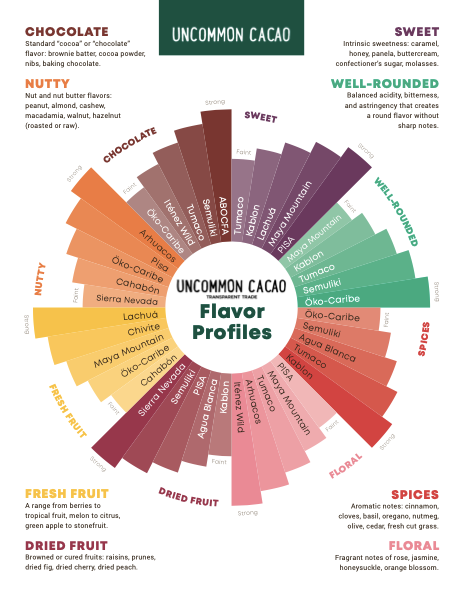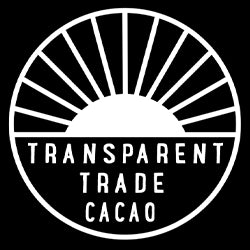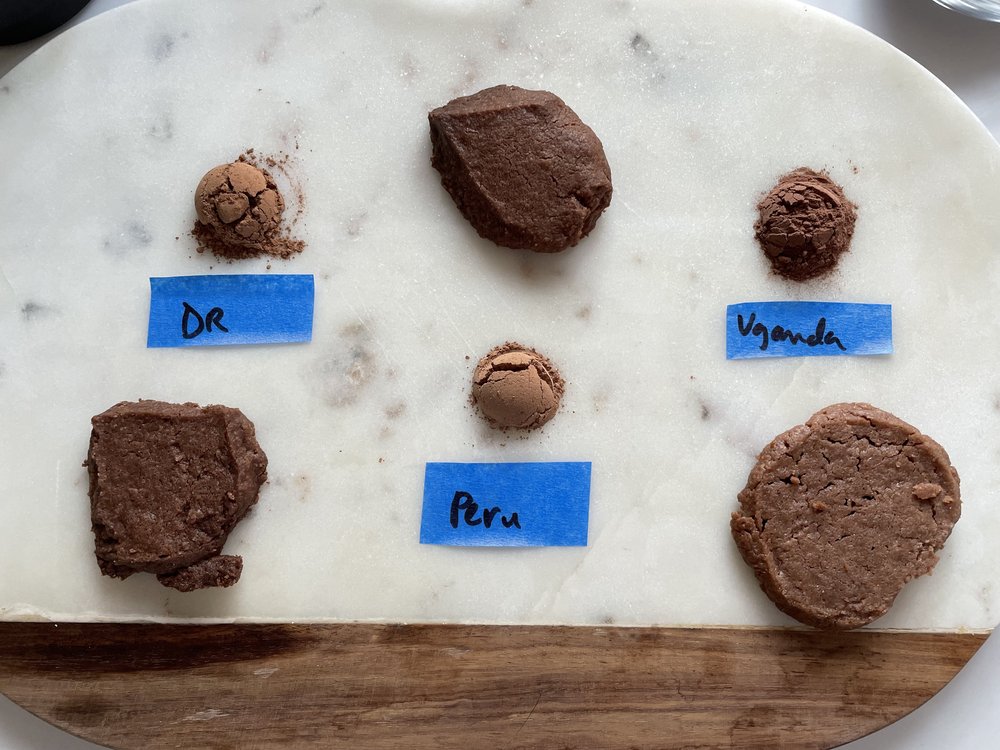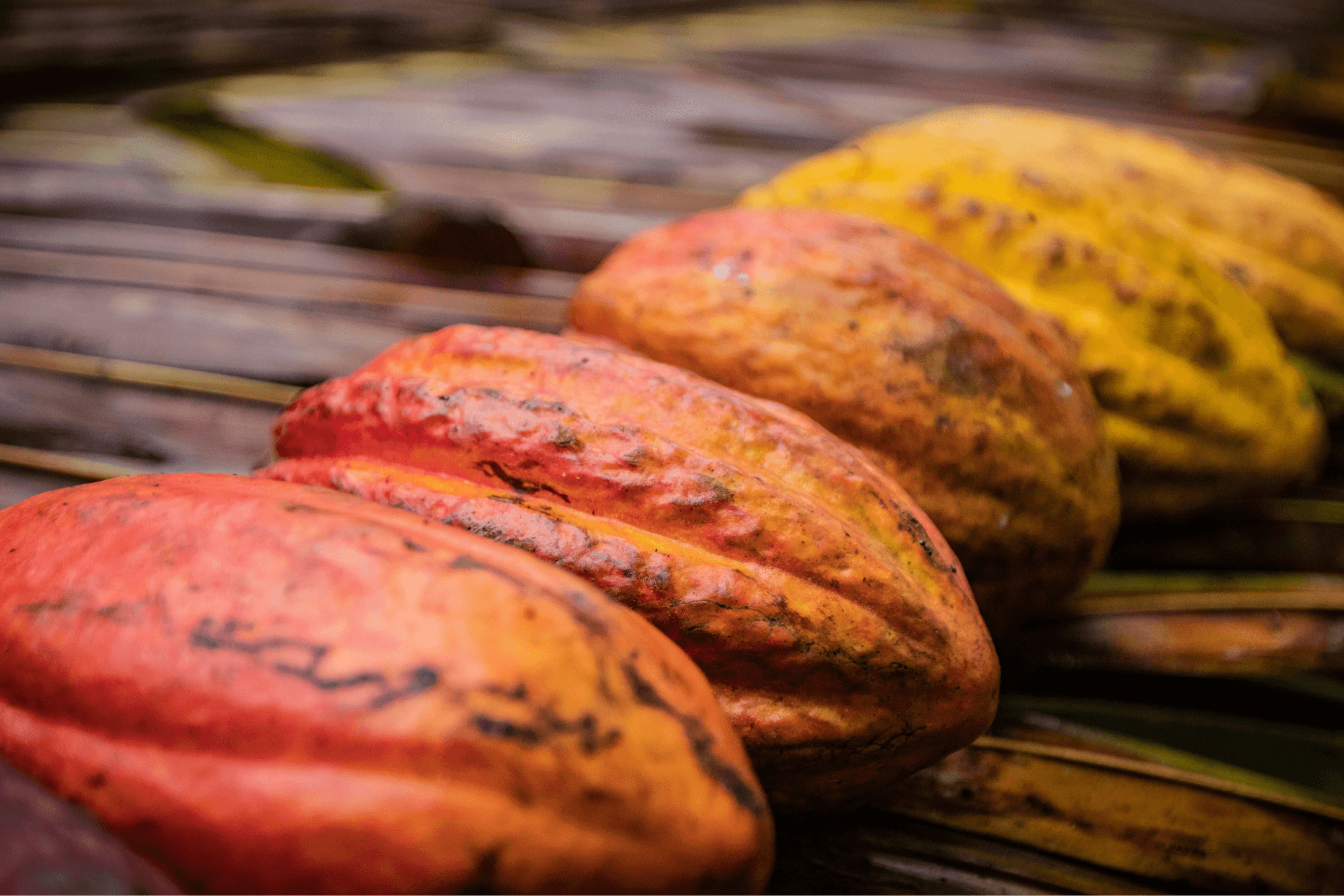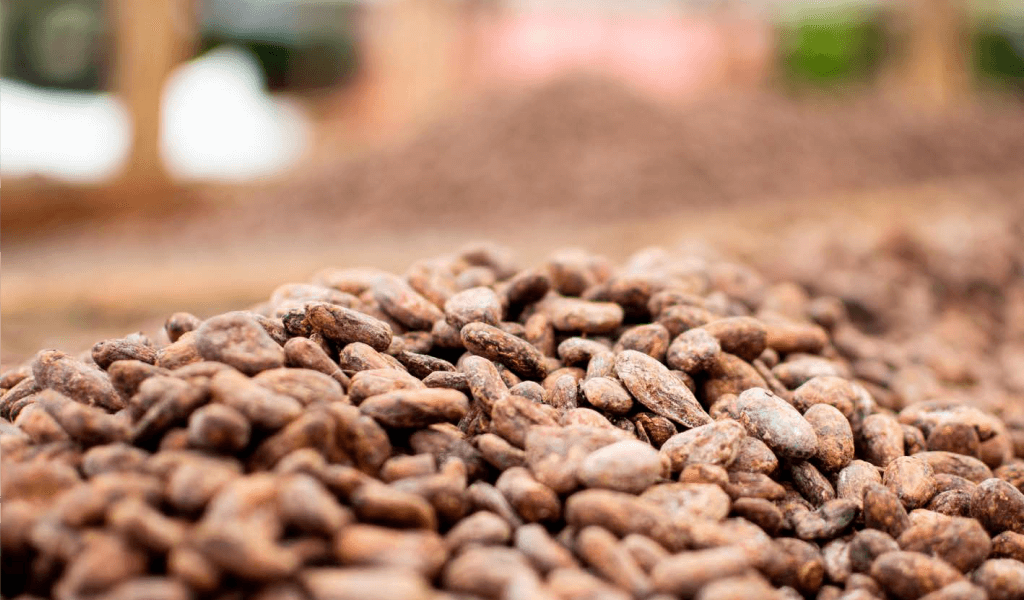Have you seen our new flavor wheel? This is an exciting tool to help flavormeisters navigate through our cacao offerings! We have had versions of this in the past and are excited to share a new format for our current offerings.
How we developed the wheel
We have 8 key flavor categories that flow from our regular QC tastings and grading sheet. Within each section, the origins are listed in strength or dominance of that flavor by color darkness and label length. If you want to see the specific flavor profile notes per bean, then please reference our price sheet or the bean bio page on our website.
How do spider charts inform the flavor wheel? We aggregate the spider charts from the landed samples and compare them to each other to rank the beans in strength for specific flavor categories. From there, we build the chart.

For example Semuliki Forest, which is the second strongest in cocoa, shows up in the well-rounded, spicy, and nutty categories too. This captures Semuliki’s flavor grades of 4 for cocoa and spices and a 3 for nutty. The overall flavor profile for Semuliki Forest 2021 harvest is cinnamon, dark chocolate and fig.

Looking at MMC, as another example, the flavor profile is still honey, raisin, and pineapple, but here in our wheel MMC can be seen as strongest for sweet (4), 3 for fresh fruit, 2 for floral and 1 for well rounded. It is well-rounded but with the sweetness, fresh fruit and florality notes really standing out. Does that make sense? Please reach out with any questions and we’ll be happy to talk you through how your specific beans show up here.
There are 3 key ways we see this wheel and flavor comparison map being useful
-
Looking for a unique Single Origin! This is the easiest way to use the wheel. Simply hone in on which dominant flavor characteristic you want and select samples or dive deeper into the flavor profiles for the beans listed in that category. Always keep in mind that tasting and sensory experiences are subjective, so what we have here may not be exactly how you perceive the beans, which is why you should still try a selection to make your decision. As a chocolate maker, your magic and chemistry with the bean is unique and like your fingerprint which is something we love and want to honor about the artisan nature of our industry!
-
Working on a blend and picking the components based on flavor profiles. To map out a blend using the wheel, you can orient first by overall flavor categories and then select the beans listed at the strength level you are looking for with the section. For instance, do you want a fruity forward blend with a chocolate backbone? Lachua and Maya Mountain would be good starting beans supported by Tumaco, Itenez, or Oko Caribe. The strength of each blend component is where you get to have fun with your test batches dialing in the perfect blend!
-
Replacing a bean either as a single origin or in a blend, since this shows what is in a similar flavor realm. So let’s say you were to lose access to PISA, then you would prioritize the flavor characteristics between sweet, floral, nutty, or dried fruits and try the origins adjacent to the category you most love PISA for. Maya Mountain could be a substitute for sweetness or floral notes. Semuliki could sub in for dried fruits if PISA were temporarily out of stock. If it’s the nuttiness you love PISA for, then Oko might be your substitute. We are not telling you which direction to go in, merely grouping and organizing our offerings by flavor to help you make your choice! Again a quick note here that we all taste differently and we love your feedback! So if you have a different opinion on a similar substitute that isn’t captured or you feel we missed a key similarity, let us know. We’d love to discuss it and wax poetic on cacao flavor characteristics! Flavor also varies by harvest so something that works well one year may show up a little differently in another year. Also if you have something specific you are looking for that you feel is missing from our lineup, let’s chat about that too! We are continuing to look to expand our offerings and want to bring unique and impactful cacaos.
There are plenty more ways to use this chart so don’t feel limited to just these three approaches. We’d love to hear how it is useful for you so please send us your feedback!
